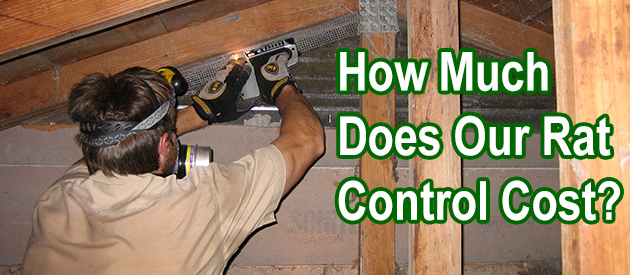Wayne County, Detroit Rat Control Situation:
Please can you offer me some free practical advice to eradicate rats from my roof space, I am English but now reside in Brazil. Here in Brazil there are no such associations, councils to exterminate vermin, the only choice is either to employ local labour and hope he is being truthful about his qualifications, quality of workmanship, formal training etc. or to do the job properly do it yourself. For several months I have heard pattering of tiny feet in my roof space, the roof space being the area between the bottom of the tiled roof (pantile type tiles) and the top of the plastic false ceiling with only about 4 inches, 100mm in between so snap traps are not practical, I live in the apartment directly below the area contaminated and have not seen any rat droppings in the apartment, the area is approx 9 meters x 15 meters =126 square meters , 29ft x 49ft = 1421 square feet. The apartment is a first floor level approx 4 meters= 13 feet from ground level with no adjoining buildings. Am I correct in assuming that the rats enter up through 4 inch, 100mm plastic rain down pipe from the roof guttering? or up through the toilet sewage system through the u bend in the bowl and then climb a wall to enter the roof space, or do the rats scale the outside 12 meter = 39 feet wall and enter the roof eves. I am considering to remove all the plastic false ceiling to gain access to the infested locations but am concerned firstly that if I disturb the rats they will disperse and then return the same way they originally entered the area, secondly, if l remove the false ceiling will l be the unlucky victim to receive their bite, what do you suggest I do? Poison the visitors first? then if quiet after a week or two remove the ceiling and completely sterilise? (with what can you recommend). I am not concerned with the humane topic of eradicating my guests, they pay no rent. (KK KK ). Also it is my intention to fully enclose the rafters and eaves on the outside with either aluminium or galvanised steel mesh. If you can take time out to advise me, I will be very grateful. For your information a cross section sketch of my roof is enclosed to help you understand the constructional theme of my roof. Would it be practical to remove the plastic ceiling room by room, first destroying the nests if any, then sanitising ,sealing all access points of entry, then to move to the next room etc.? I would really appreciate any advice you would furnish, unfortunately I can not afford to pay your expenses etc. for you to submit a quotation, I can offer you though if you ever visit Brazil a nice glass of cold Chopps (Brazilian draught beer). Fondest regards and in anticipation of a reply many thanks.
My response: Yes, your plan to seal off the roof with galvanized steel mesh should work. But you have to seal 100percent of the openings. Then, trap, properly trap on rat runways, ALL the rats, and remove them from the house.
Detroit Rat Control Tip of The Week
Do Rats Consume Or Like Cheese?
Being an omnivorous animal, rats tend to feed on anything their claws can grab. This feeding habit with no restrictions allows them to feed on vegetables, fruits, meats, grains, and even dairy products. There's however a myth that rats prefer cheese to any other type of food. As a result of this, many people consider cheese as a rat's favorite and will prefer using them as baits whenever they want to trap rats.
This might seem like a very good idea, but the fact is there is nothing in particular that clearly states that rats prefer cheese to other food. Although they do eat it when they have access to it, that doesn't make it the food they like
To help you understand this better and know whether or not rats consume and like cheese we will be taking you through the diet of a rat. With this, we will be able to provide an answer to the question above.
Rats are voracious eaters; all they care about is to fill up their stomach with food. They only become choosy when there is an abundant source of food and several options to choose from. In situations like this, rats will prefer to eat other foods like meat, grains, and fruits instead of eating cheese.
Apart from all that has already been mentioned above, the nutritional value of cheese is low compared to what rats need daily. This simply means that if you keep a rat as a pet, offering it a meal plan that is mainly comprised of cheese is a bad idea.


